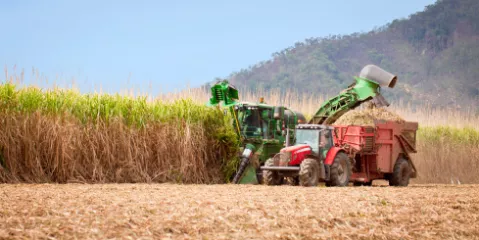- | Government Spending Government Spending
- | Expert Commentary Expert Commentary
- |
End the Billion-Dollar Farm Bill Bailout
The Occupy Wall Street movement was right to protest bailouts of wealthy and well-connected banks. But cronyism is not restricted to the financial sector. The farm bill currently going through Congress would bail out farmers for the years to come if they ever saw their revenue fall by a small share from their recent record-high levels.
This article was originally published in the Washington Examiner.
The Occupy Wall Street movement was right to protest bailouts of wealthy and well-connected banks. But cronyism is not restricted to the financial sector. The farm bill currently going through Congress would bail out farmers for the years to come if they ever saw their revenue fall by a small share from their recent record-high levels.
The "shallow loss" program would effectively guarantee farmers' revenue. Here is how it would work. Under current crop insurance program, farmers can buy insurance that covers poor yields and declines in prices. The government heavily subsidizes such insurance by paying about two-thirds of the premiums, at a cost of $7 billion annually.
Like most insurance plans, the current system doesn't insure against all revenue losses. The shallow-loss program would change that by sending money to farmers in the event that their actual revenue fall by 11 percent to 21 percent, a drop typically not covered by existing crop insurance.
Backers of the programs claim the extension would cost taxpayers $3 billion a year. Senate Agriculture Committee Chairwoman Debbie Stabenow, D-Mich., even argues that the program would save taxpayers money overall. That's because the bill plans to eliminate the existing "direct payments" program, scored at about $4.9 billion a year by the Congressional Budget Office. The claim is that the bill would generate net savings of $2 billion a year.
Direct payments are left over from the Freedom to Farm Act of 1996 -- a plan supposed to eliminate farm subsidies. Far from disappearing, though, the payments have been paid to farm operators and landowners whether they were farming or not. Recently, however, farm subsidy proposals have become politically unsustainable. That's likely due to the fact that for the first time farm income exceeded $100 billion in 2011. Also, average farm household income has consistently grown more rapidly than average U.S. household income, particularly after 1995.
Will this extension of the federal crop insurance program only cost $3 billion? It's unlikely. First, according to the recent study "Field of Schemes: The Taxpayer and Economic Welfare Costs of Shallow-Loss Farming Programs" published by the American Enterprise Institute, even at CBO baseline prices, a shallow-loss program would be almost twice as costly as currently scored.
Second, if history is any guide, it won't be long before the program resembles the direct payments it is supposed to replace. That's because, if implemented, these subsidies will kick in at relative low level of losses. Given that prices will surely come down from their current record levels, it will guarantee that most farmers will get a payment every year.
Also, because the payments are tied to current production, if prices are declining, they'll guarantee more production, which will drive down prices further, triggering a death spiral that guarantees low prices and high government expenditures for at least five years, and maybe longer. The only legitimate guarantee here is that this will turn into a disaster for both farmers and taxpayers.
Finally, even assuming that average prices remain at or close to current levels, this deal is hardly fiscally responsible. Both the Ryan plan and the Obama deficit commission had suggested capping all crop and insurance subsidies to $3 billion, not the $10 billion this will cost after adding crop insurance.
Direct payments were a bad and costly idea. However, there is no valid justification for taxpayers paying for a crop insurance program for some of the wealthiest farmers in the country, and it would be irresponsible to expand it further. Sold as a deficit reduction plan, shallow loss is a budget calamity waiting to happen.
We should take heed of the old saying "one year's weed, seven years' seed," as it portrays the truth about the difficulty of removing farm subsidy programs once established. The only thing good about farm subsidies is that it reminds Americans that cronyism isn't restricted to one part of the economy.
